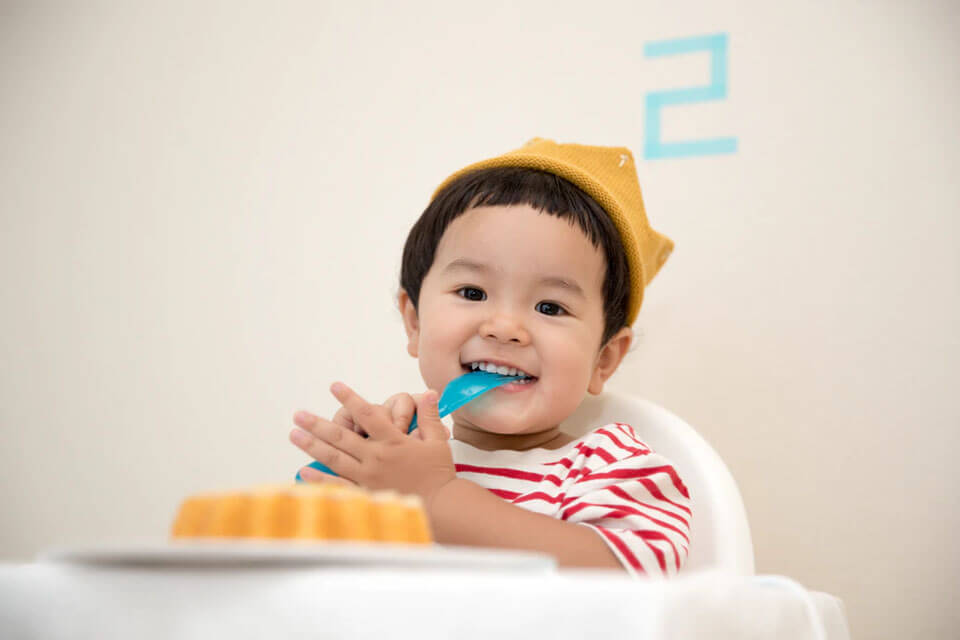
By: B&Company Vietnam
Reports & Publications
Comments: No Comments.
“6.15 Million 0-3 years old babies”
Asia-Pacific has been a major market for baby care products. In 2015, the region accounted for 49% value sales of baby food globally ($14.7bn/$30bn), and 23% value sales of diapers globally ($6.7bn/$29bn).
Within Asia-Pacific, developing countries are the emergent markets for baby care products. For example, from 2012 to 2017, Thailand, Malaysia, and Vietnam are estimated to have positive CAGR of baby food market size, at 6%, 6.6%, and 12.1% respectively.
 Vietnam underwent a relatively quick expansion in baby care product market, largely thanks to the country’s having a lot of babies. In 2015, Vietnam had 6.15 million 0-3 year old babies, equal to 6.7% of total population; and the crude birth rate is 17.4 newborn babies per 1000 people.
Vietnam underwent a relatively quick expansion in baby care product market, largely thanks to the country’s having a lot of babies. In 2015, Vietnam had 6.15 million 0-3 year old babies, equal to 6.7% of total population; and the crude birth rate is 17.4 newborn babies per 1000 people.
By comparison, the corresponding figures of Japan are 4.3 million, 3.4%, and 8.3 newborn babies per 1000 people. Besides, many Vietnamese women go to work (comprising 48% of labor force). They have tighter schedule and thus need more ready-made baby care products.
“Reach $1.5 Billion in 2017”
For better analysis, the products will be divided into 3 sections: “baby food”, “diaper”, and “baby specific products”. As for “baby food”, Vietnam’s market size grew by 9% in 2015 and is calculated to reach $1.5bn of worth in 2017.
Vietnamese consumers are heavily influenced by factors such as nutrition, price, and safe ingredients. Many of them also find it necessary to consult family, friends, or even baby health experts before finalizing their choices.
Regarding supplying side, Vietnam Dairy Products JSC (Vinamilk) is the market leader, making up 27% of value sales in 2015. Other big players are mostly foreign invested companies, including Abbott, Nestle, and FrieslandCampina Dutch Lady.
“Bobby, Huggies and Pampers nearly 80% of share”
 “Diaper” is also a big section of baby product market. In 2015, Vietnam’s usage of nappies/diapers/pants among 0-3 year old babies was 192 units per baby per year. That multiplied by 6.15 million 0-3 year old babies means a total sum of 1.2 billion units consumed.
“Diaper” is also a big section of baby product market. In 2015, Vietnam’s usage of nappies/diapers/pants among 0-3 year old babies was 192 units per baby per year. That multiplied by 6.15 million 0-3 year old babies means a total sum of 1.2 billion units consumed.
In general, Vietnamese consumers prefer disposable diapers (75% of total sales) to cloth diapers. The biggest concerns of buyers over these kinds of products are skin protection, price, and overnight dryness.
There are about 50 diaper brands currently available in Vietnam, but the vast majority of market share belongs to Diana Unicharm with Bobby (36% of total retail value), Kimberly Clark with Huggies (28%), and Procter & Gamble with Pampers (15%).
Besides mainstream brands, imported brands like Goon, Merries, Genki, Moony, etc. can be found abundant in many stores.
“Demand for high-quality products”
“Baby specific products” include hair care, skin care, toiletries, rash treatments, etc. This particular section has observed unorthodox quick spread of internationally acknowledged brands, especially in urban areas.
On most online baby care shops (e.g. kidplaza.vn, tuticare.com), consumers can find various foreign brands of the US, Japan, Germany, Italy, and France. It seems that parents usually opt for high-quality baby care products within their financial capacity, making the market quite generous towards big players around the world.
For the time being, Johnson & Johnson leads the market with a retail value share of 64% in 2015. Other renowned names include Bubchen, Pigeon, Chicco, etc.
All in all, Vietnam’s market for baby care product has great potential to further develop in near future. The expansion of online shopping and customers’ growing preference towards high-quality products, especially in urban areas, are favorable conditions for Japanese companies to join the playground.
B&Company Trung Hoang
References:
- Nielsen, “Trends in the baby food and diaper market around the world”, 2015
- Transparency Market Research, “Thailand/Malaysia/Vietnam Baby food and Pediatric nutrition market: Analysis and forecast 2007-2017”, 2011
- Euromonitor, “Baby food in Vietnam”, “Nappies – Diapers – Pants in Vietnam”, 2015
- United Nations – Department of Economic and Social affairs (esa.un.org)
- Phu Nu Viet Nam – Official Newspaper of Vietnam’s Women Union


